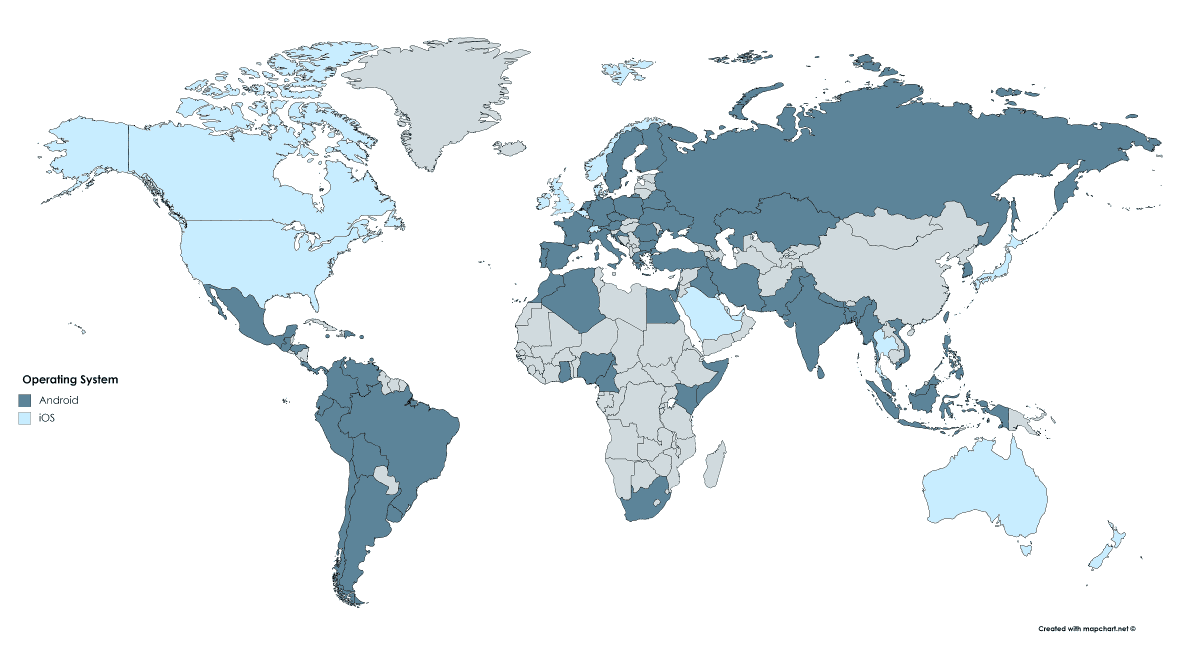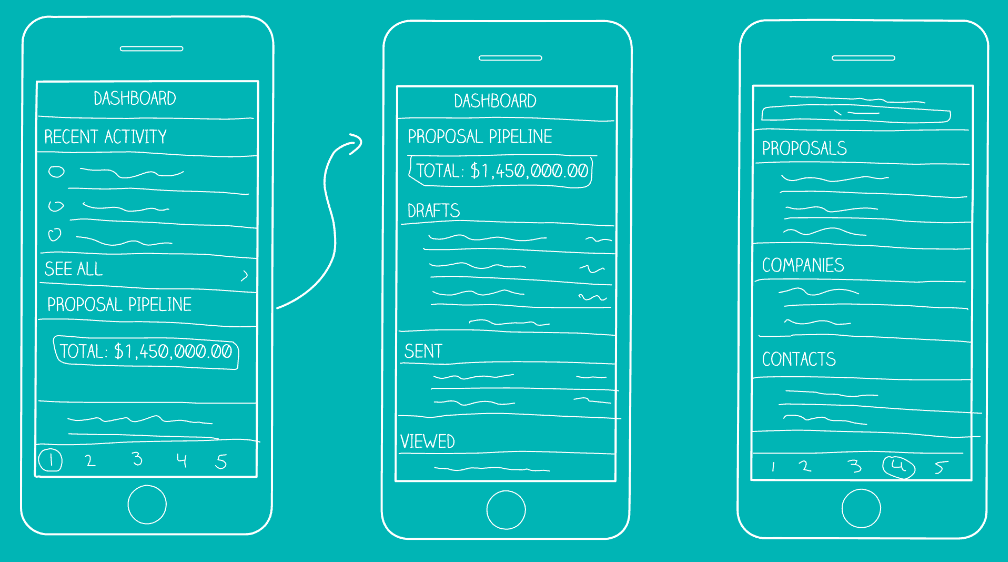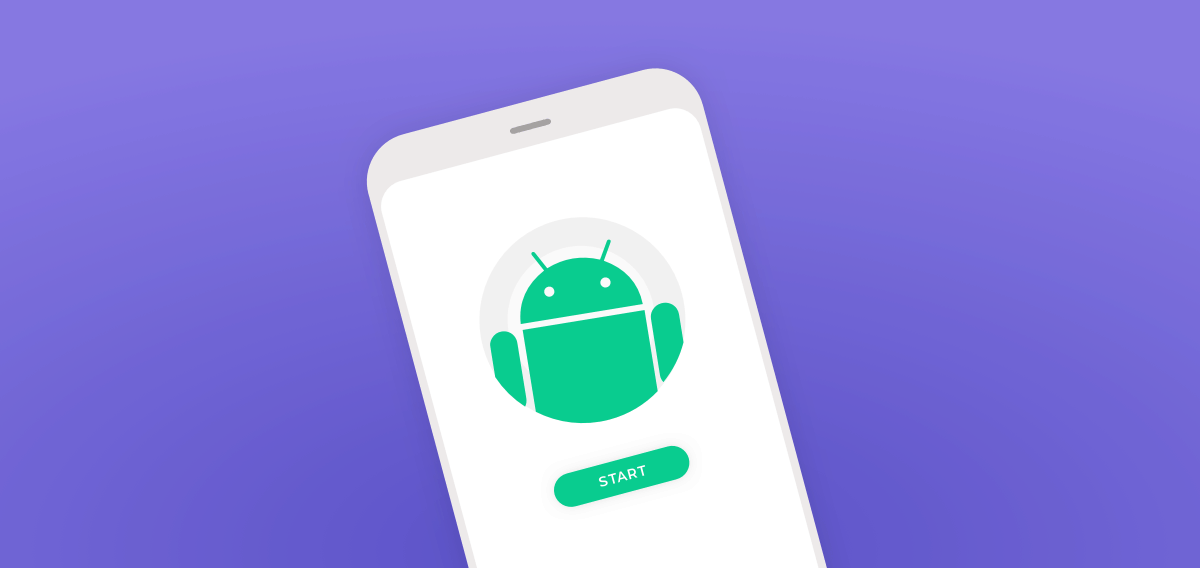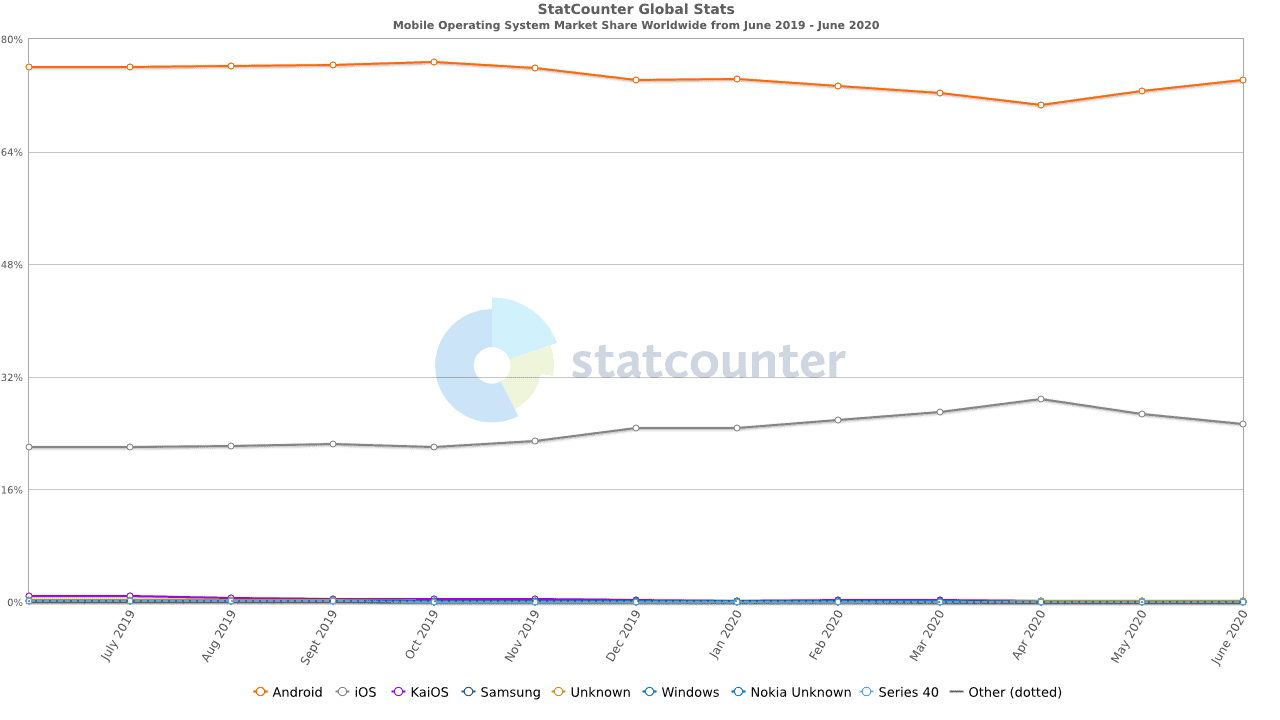So you want to build an Android app 🤖
You’ve brainstormed an amazing mobile app idea—you may even know exactly what features it needs to have or what you want the user interface to look like.
Now what?
Now it’s time to roll up your sleeves and make some mobile magic happen! But first, you need a plan.
Remember, a goal without a plan is just a wish—and at MindSea, we’re here to help you turn that wish into a goal and that goal into reality. So let’s figure out the concrete steps it will take to get to your end product.
Here’s how to do it:
Do Your Research
Start by determining why Android is your operating system of choice.
Do you know for sure that your audience is on Android, or is that simply your own preference?
When building your app, it’s a bad idea to make decisions based on hunches and gut feelings. You want your target audience to be engaged, and you want your app to thrive for years to come. That means your audience’s preferences are more important than your own.
On a global scale, Android is where it’s at:
Image Source: http://gs.statcounter.com/os-market-share/mobile/worldwide
And if emerging markets are your target, building an Android app is still the stronger choice:

Image source: https://deviceatlas.com/blog/android-v-ios-market-share
On the other hand, iOS is more popular in North America and Australia, and more popular among teens.
Before you begin building, you need to know which platform fits your company’s vision and your audience demographic.
Secure Your Team
Are you equipped with the resources to build an Android app?
Because Android is an open-source OS, making your app compatible across devices is not so straightforward. Technical proficiency, along with the time and money needed for your build, typically have the biggest impact on whether you build your app in-house or outsource it to an agency.
Consider whether your existing team has these three things:
- Capacity – If you’re a small startup, does it make sense for any (or all) of your team members to shift their focus from other aspects of the business in order to pursue this project? Remember, an app can take over four months to build. Will this cause delays in other areas of your business?
- Capabilities – The members of your team probably have their areas of expertise and handle those quite well, but how would they adjust to new responsibilities like project management, app design and app development? The smaller your team, the more hats everyone will have to wear.
- Funds – Time is money, so shifting your team’s focus from daily operations to the app build could affect other revenue-generating activities. While hiring an external team can be costly, you have to weigh it against the cost of lost business or the cost of hiring for new internal roles.
Depending on your resources, both tangible and intangible, hiring an outside agency may be your best bet. If that sounds like you, reach out to one of our Product Specialists today to see how we can help!
Develop Your Strategy
Make a plan.
Know your timelines.
Have a clear understanding of who your app is for and what problem(s) it is solving. Make sure your plan includes important checkpoints such as user research, user testing, prototyping, investor pitches, etc.
At MindSea, when we take on any new client build, we begin with what we call the Mobile App Blueprint. This document keeps our team on track by mapping out the timeline of the project, the estimated cost, the design and development strategy and more.
During this step you should also clarify your target audience and the essential requirements of your app. Host a strategy session with your team and your clients to brainstorm functionality and prioritize features based on market need, market want, and what competitors are delivering.
Do More Research
You’ve done the initial brainstorming; now you need to back up your ideas with data.
Before you get too deep into your design and development plan, you need to have clear, data-backed evidence supporting your every decision. You need to be able to articulate exactly who and what your app is for, why it should have certain features, and why it should be built out the way it will be.
Not sure how to conduct user research? Check out How To Conduct User Research That Drives UX Success to get started.
Create Your Sketches
Depending on the size and complexity of your app, you might use a tool like OmniGraffle or LucidCharts to create your sketches—or simply a pencil and a piece of paper, or a marker and a whiteboard.
No matter your approach, mapping out the user flow of your app is important. If you can paint a clear picture up front of how navigation works, where certain screens will take a user to next—essentially, the results of any in-app action—you’ll be able to uncover design flaws and usability issues before you even start building.

Build Out Your Wireframes
After the sketches come your wireframes. These are low-fidelity, simplified outlines of your product made up of boxes, words, lines and sometimes descriptions—basically more detailed sketches. They’re meant to lay the framework for your app, not produce the final look and feel.
Begin Prototyping
If you’re looking to raise capital for your app, you’ll need to have something to show potential investors. That means building a prototype.
A prototype is something concrete, something tangible that you can use in user testing, final design planning and investor pitches to showcase the features of your app.
Start Building!
Finalize designs, create animations, build out your code…
This is where it all comes together! We recommend using Android Studio, the official integrated development environment for Android, and pairing it with tools such as Material Design and Java.
Wrapping It Up
As with any major project, when you break an app build down into actionable steps, the whole process seems much less intimidating. Then again, mapping out every step of the build also reveals just how much goes into it!
Learning to code and building out your own mobile app is definitely doable—you can look into courses on sites like Coursera and Lynda to get started, or find some local meetups or training programs in your area.
If, on the other hand, the process seems long and complex, give us a call! That’s why we’re in the business we’re in—to help startups and enterprise companies like yours get their mobile apps to the market faster.
At MindSea, our team is obsessed with creating a great mobile app experience for Android devices. We’re constantly testing and adopting the latest technologies from Google to ensure that our apps live up to the Google standard—and exceed our clients’ expectations.
Want to see how we can help you with your next build? Contact us today.




